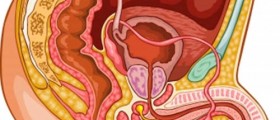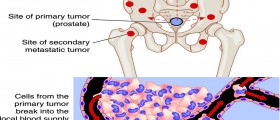Loading...
during holep, it is possible that the resectoscope inserted into the prostate to do holep may have injured the external sphincter. A stronger sphincter will be able to recover more quickly from the injury thus reducing the time of incontinence.
Loading...
Since immediately after holep, will be up a lot, thus flashing the bladder every 2 hrs or so, won’t be an issue.
Loading...
Do your Kegels before surgery to get a head start on strengthening the outer sphincter.
Loading...
Loading...
Thanks for alerting me about urgency incontinence,
Started Kegel several days ago.
Loading...
Once the catheter was removed, I was told to drink normally, NOT to over drink or under drink. Just drink what I always do (but of course, avoid things like coffee and alcohol that may irritate the bladder). So I don't see any need for you to be getting up every 2 hours to drink. And for me at least, I was able to sleep 6 hours plus the very first night I got home without having to pee which was wonderful. Certainly ask Dr Das, but this is my recollection. Hope this helps.
Loading...
Readers who have had HoLEP and readers who are considering HoLEP often wonder how does Holep compare head to head with other laser techniques and TURP. I came across the following paper which answers this question. This paper analyzed the results from randomized control clinical trials using various lasers to resect the prostrate adenoma. It analyzed 36 trials involving 3831 patients.
The paper is:
Different lasers in the treatment of benign prostatic hyperplasia: a network meta-analysis
by Xingming Zhang, et. al.
www.nature.com/articles/srep23503
Free access
Note: English was not the native language of the authors, but this should not prevent us from understanding the results.
Abstract (rearranged and reworded)
All available surgical treatments for benign prostatic hyperplasia (BPH) have their individual advantages or disadvantages. However, the lack of head-to-head studies comparing different surgeries makes it unavailable to conduct direct analysis. To compare the efficacy and safety among different lasers and transurethral resection of prostate (TURP) for BPH, randomized controlled trials were searched in MEDLINE, EMBASE, Cochrane library, WHO International Clinical Trial Registration Platform, and Clinical Trial.gov by 2015.5; and the effectiveness-, perioperation- and complication-related outcomes were assessed by network meta-analysis. 36 studies involving 3831 patients were included.
Holmium laser through resection and enucleation had the best efficacy in maximum flow rate, best post-voiding residual volume improvement.
Holmium and thulium lasers seem to be relatively better in surgical efficacy and safety, so that these two lasers might be preferred in selection of optimal laser surgery.......
Thulium laser through vapo-resection was superior in improving international prostate symptom score and holmium laser through enucleation was the best for. Diode laser through vaporization was the rapidest in removing postoperative indwelling catheter, while TURP was the longest. TURP required the longest hospitalization and thulium laser through vapo-resection was relatively shorter.
Effectiveness-related outcomes
Three effectiveness-related outcomes, including Q max, IPSS and PVR, were analyzed in the study. ....................
Among them, holmium laser (resection and enucleation) was significantly superior to other lasers and TURP in improving Q max, and green light laser through vapo-enucleation was the worst one technique.
Rank probability of Q-max (from best to worst) among lasers was holmium laser (resection)holmium laser (enucleation)thulium laser (vapo-resection)Nd:YAG (vaporization)TURPgreen light (vaporization)diode laser (vaporization)green light (vapo-enucleation). (Fig. 3A)
In terms of IPSS score, thulium laser through vapo-resection showed significant superiority in improving IPSS over other interventions, rank probability (from best to worst): thulium laser (vapo-resection)holmium laser (enucleation)green light laser (vaporization)TURPgreen light laser (vapo-enucleation)KTP/Nd:YAG (vaporization)Nd:YAG (vaporization)diode laser (vaporization) (Fig. 3B).
For PVR, holmium laser through enucleation was the best technique and Nd:YAG (vaporization) was the worst one. ... Rank probability (from best to worst): holmium laser (enucleation)thulium laser (vapo-resection)KTP/Nd:YAG (vaporization)diode laser (vaporization)green light laser (vaporization)TURPgreen light laser (vapo-enucleation)Nd:YAG (vaporization)(Fig. 3C).
Perioperation-related outcomes
Perioperation-related outcomes included operating time, duration of catheterization and stay of hospital. .......
For operating time, seven interventions through different surgical techniques were availably compared—holmium laser, thulium laser, green light laser, Nd:YAG, diode laser and TURP. Nd:YAG laser through vaporization and TURP had much fewer operating time than others, while holmium laser (resection) took the longest time;..... Rank probability: (from shortest to longest) Nd:YAG (vaporization)TURPdiode laser (vaporization)green light laser (vaporization)thulium laser (vaporesection)green light laser (vaporization)holmium laser (enucleation)holmium laser (resection) (Fig. 4A).
For catheterization, patients underwent diode laser (vaporization) were the rapidest technique in removing catheter after surgery, and TURP was the longest one;..... Rank probability from short to long: diode laser(vaporization)green light laser(vaporization)thulium laser(vaporesection)holmium laser(enucleation)holmium laser(resection)TURPNd:YAG(vaporization)green light laser(vapo-enucleation) (Fig. 4B).
In terms of hospitalization, TURP required the longest time of stay in hospital, while thulium laser was relatively shortest,..... Rank probability(from shortest to longest),: thulium laser (vapo-resection)green light laser (vaporization)diode laser (vaporization)holmium laser (enucleation)holmium laser (resection)green light laser (vapo-enucleation)Nd:YAG (vaporization)TURP (Fig. 4C).
Short-term complications-related outcomes
Short-term complications-related outcomes, including dysuria, urinary retention, re-catheterization, clot retention, transfusion, incontinence, TURS, and UTI (urinary track infection) were analyzed. Total of nine studies reported dysuria, which was availably compared in five interventions through different techniques (holmium laser, green light laser, KTP/Nd:YAG, Nd:YAG laser and TURP).
The network analysis showed that dysuria was the most common short-term complication in patients who underwent green light laser(vapo-enucleation) and holmium laser(enucleation), and the least common in Nd:YAG laser with vaporization.....
The Nd:YAG laser through vaporization technique was the most common technique inducing urinary retention. Besides, re-catheterization was always seen in patients underwent green light laser (vaporization) and diode laser (vaporization); and it was barely occurred in Nd:YAG laser (vaporization), basically corresponding with the outcome of dysuria but not urinary retention (Fig. 5A–C). KTP/Nd:YAG (vaporization) and green light (vaporization) were mostly related with post-operation incontinence(Fig. 5D).
Transfusion was mostly seen in TURP but rarely in diode laser(vaporization) and thulium laser (vapo–resection); Nd:YAG laser (vaporization) and TURP had much higher rates of occurrence of clot retention, while holmium laser (enucleation) had the least rate(Fig. 6A,B). In addition, TURS was most seen in patients treated with TURP (Fig. 6C). While considering UTI(urinary track,infection), the most related technique was Nd:YAG laser through vaporization (Fig. 6D).
Long-term and other complications-related outcomes
Long-term complications-related outcomes, including bladder neck contracture or stenosis and urethral stricture or meatal stenosis, were analyzed in our network meta-analysis. Bladder neck contracture or stenosis was frequently occurred in KTP/Nd:YAG (vaporization) and holmium laser (enucleation); while green light (vaporization) and diode laser (vaporization)were on the contrary (Fig. 7A)..... Intriguingly, green light through vaporization plus enucleation had fewer bladder neck contracture or stenosis than vaporization alone. TURP was mostly associated with urethral stricture or meatal stenosis, and diode laser (vaporization) had the least incidence (Fig. 7B). Analysis of green light through different techniques showed that combination of vaporization and enucleation had less urethral stricture or meatal stenosis, compared to vaporization alone.
~
Re-operation was analyzed as other complications-related outcomes and was reported in 13 studies5,9,11,16,18,21,22,28,32,33,34,35,36,38,41. However, the reasons for re-operation were not adequately interpreted in all included studies. Therefore, it was difficult to split it into subgroup analysis, and network meta-analysis was conducted for the overall re-operation rate, which was mostly seen in diode laser (vaporization) and thulium laser (vapo-resection) (Fig. 7C).
Discussion
TURP is always considered as the gold standard surgical treatment for patients with BPH; however, it is still associated with significant morbidity and mortality, such as TURS and transfusion. In the past two decades, both researchers and surgeons devoted to developing novel surgical treatments for pursuing a much better efficacy, as well as much more improvement of safety. Since Nd:YAG laser was firstly reported being used in the treatment of BPH by Costello and colleagues in 199243, more lasers were introduced to treat BPH with improved surgical safety and efficacy. Afterwards, the improvement of technology led the appearance of innovative lasers applying in surgical practice of BPH. At present, the most often used lasers are holmium laser, green light laser and thulium laser with different surgical techniques, both in clinical practice and academic research44.
However, among diverse kinds of laser techniques, there is no completely or absolutely perfect intervention. Each laser has its advantages or disadvantages with different clinical outcomes. How to select the best surgical treatment for BPH is difficult but be of importance.
Based on our network meta-analysis, holmium laser achieved a better Q max and less PVR, and thulium laser achieved a lower IPSS than other lasers with different techniques and TURP. In the aspect of peri-operation-related outcomes, holmium laser through resection technique took the longest operating time and thulium laser (vapo-resection) ranked in the middle. It was also proven by a direct analysis that thulium laser required a longer operating time than holmium laser (72.4 vs 61.5 minutes)42. However, both the two techniques had shorter time of indwelling catheter and time of stay in hospital resulting in a reduced incidence of complications. So, holmium laser and thulium laser showed a better surgical efficacy and had a higher safety with the least incidence of complications.
The resection and enucleation techniques of thulium and holmium lasers were seen as similar as open prostatectomy in the complete removal of the prostatic lobes31,39,42. The thulium laser could perform a smooth incision or vaporization by continuous mode42. This might decrease the occurrence of LUTS and improve IPSS after operation. The holmium laser always was characterized as scar-free disruption and its incision could reach the surgical capsule of prostate31,39. And this might increase the outflow of bladder and reduce the PVR. But all these advantages were still not enough to explain the better effectiveness of holmium laser and thulium laser techniques in improving patients’ obstructive symptoms.
For peri-operation-related outcomes and the incidences of complications, green light laser through vapo-enucleation was more frequent associated with dysuria. Urinary retention was frequently seen in Nd:YAG laser alone or combined with KTP technique. Also, re-placement of catheter was mainly associated with green light laser and diode laser techniques. It was very likely that these two techniques could easily induce tissue edema and cause deficient effect when resecting the apex of prostate. Nd:YAG/KTP, diode laser, green light laser and TURP were observed with more complications (particularly green light laser) only with medium efficacies.
As shown in the analysis, we compared six kinds of laser techniques and TURP. Nowadays, since the numerous postoperative complications of the initial laser procedures and the improvement of new equipment, some lasers had to be eliminated. Nd:YAG laser technique was firstly applied in the surgical treatment of BPH and is now abandoned in clinical practice, for its incapability in ablating prostate tissue immediately, postoperative frequency and urgency led by deep tissue necrosis and high rate of re-operation45. As show in the study, Nd:YAG technique achieved the worst surgical effect. In contrast to obsolete laser procedures, the current higher powered lasers—holmium laser, thulium laser, green light laser and diode laser—are able to ablate prostatic tissue rapidly. Holmium laser is optimized for incision, and green light laser is optimized for vaporization. Previously researches showed that these two techniques had the superiorities over other lasers in the respect of functional outcomes, which were inconsistent with the results of our analysis44.
According to the results of our network meta-analysis, it seemed that the choice of laser techniques for BPH should be depended on what kinds of aims the patient wanted to get benefit, such as TURP may not be the best choice for patients with previous documented or suspected urethral stricture or meatal stenosis, as its incidence of postoperative urethral stricture or meatal stenosis was the highest.
In conclusion, this is the first time to indirectly compare the efficacy and safety of different lasers with TURP for BPH by applying network meta-analysis. To date, no completely or absolutely perfect laser technique could be found to take the place of TURP in the surgical treatment of BPH. Holmium laser and thulium laser may seem to be relatively better in terms of surgical efficacy and safety, so that these two lasers might be preferred in the selection of optimal laser surgery.
———————
Outcome measures included: 1) Effectiveness-related outcomes: maximum flow rate (Q max), International Prostate Symptom Score (IPSS), post-void residual volume (PVR); 2) Perioperation-related outcomes: operating time, hospitalization and catheterization; 3) Complications-related outcomes: ① short-term complications-related outcomes (always occurred within one month after operation): dysuria, re-catherization, urine retention, clot retention, transfusion, transurethral resection syndrome (TURS), urine incontinence, and urinary tract infection (UTI); ② long-term complications-related outcomes (always occurred after one month of operation): bladder neck contracture or stenosis, urethral stricture or meatal stenosis; ③ other complication-related outcome: re-operation because of any other complications.
Loading...
HoLEP, code 52649, is an outpatient procedure and does not require preauthorization fro BCBS.
Called BCBS and asked if staying overnight for 23 hrs at hospital under observation is considered outpatient. The answer was yes, not only that the observation time could be as long as 72 hrs and still considered outpatient.
Loading...
Just want to mention that my prostate is 25cc by urodynamic and 50cc by TRUS.
Because of such a small prostate, Dr. Das said when he got in, he might just do a bladder neck incision without HoLEP. I told him no, I wanted the full HoLEP as I wanted 10 years durability.
Loading...
The main purpose of this post is to inform readers that enucleation, which HoLEP uses, has significantly less chance of scar formation than vaporization or TURP because enucleation peels off the overgrown tissues as oppose to burns or vaporizes them off.
The reason this research was done is because Dr. Das said that scar formation after holep was 5%, which is alarming high as incontinence was only less than 2% (from Dr. Das.)
The result of this research shows that the enucleation (removing the overgrown tissues like peeling off the pulp from a slice of orange)) technique has very low rate of scar formation (2%) as oppose to vapor resection (vaporize the overgrown tissues) technique which has a much higher rate of scar formation (14%). Thus, Dr. Das 5% scar formation seems to be too high when compares with other published papers
Method: patients with
Loading...
The main purpose of this post is to inform readers that enucleation, which HoLEP uses, has significantly less chance of scar formation than vaporization or TURP because enucleation peels off the overgrown tissues as oppose to burns or vaporizes them off.
The reason this research was done is because Dr. Das said that scar formation after holep was 5%, which is alarming high as incontinence was only less than 2% (from Dr. Das.)
The result of this research shows that the enucleation (removing the overgrown tissues like peeling off the pulp from a slice of orange)) technique has very low rate of scar formation (2%) as oppose to vapor resection (vaporize the overgrown tissues) technique which has a much higher rate of scar formation (14%). Thus, Dr. Das 5% scar formation seems to be too high when compares with other published papers
Method: patients with less than 30 gram prostate (because smaller prostates have a higher incidence of BNC) and Thulium laser was used because it can be used for both vaporization and enucleation.
Why Thulium laser?: because Thulium laser enucleation is similar to HoLEP enucleation and I could not find any paper that discusses scar formation using HoLEP.
The paper for the clinical trial is:
Thulium laser enucleation versus thulium laser resection of the prostate for prevention of bladder neck contracture in a small prostate: a prospective randomized trial
(World Journal of Urology, First Online: 07 September 2018)
by Qian SunWenhuan GuoDi CuiXiaohai WangYuan RuanFujun ZhaoShujie XiaBangmin HanYifeng Jing
“Purpose
To compare the safety and efficacy of thulium laser enucleation of the prostate (ThuLEP) versus thulium laser resection of the prostate (ThuLRP) in small prostates (≤ 30 g) and to test the validity of ThuLEP for bladder neck contracture (BNC).
Methods
A total of 115 patients with benign prostatic hyperplasia (BPH) (prostate size ≤ 30 g) were randomly assigned to ThuLEP (n = 56) or ThuLRP (n = 59). All patients were evaluated preoperatively and at 1, 3, 6, and 12 months after surgery. Baseline characteristics of the patients, perioperative data, postoperative outcomes and complications were assessed.
Results
Comparisons of the baseline and perioperative data demonstrated no significant differences between the ThuLEP and ThuLRP groups. Significant improvement was noted in the International Prostate Symptom Score, quality of life, maximal urinary flow rate (Qmax) and post-void residual volume (PVR) in both groups at the 12-month follow-up, and assessment showed no differences in these parameters between the two groups. The ThuLRP group showed a significantly higher rate (13.6%) of BNC than the ThuLEP group (1.8%). There were no significant differences in other complications between the two groups.
Conclusions
ThuLEP and ThuLRP are both safe and efficient procedures for the treatment of patients with small prostate volume, while ThuLEP can significantly reduce the risk of BNC in patients with a small prostate because the procedure enucleates adenomas without thermal damage to the bladder neck.
Introduction
.........
As one of the most innovative and accepted lasers, thulium lasers work at a wavelength of two microns in continuous-wave mode and offer more advanced vaporization and haemostatic features than other lasers [3]. Furthermore, thulium lasers are suitable for most kinds of prostatectomies including vaporization, bladder neck incision (BNI), vaporesection and enucleation [4, 5, 6].
The first choice treatment for patients with a small prostate is medical intervention and surgical treatment is an alternative for patients who are refractory to medical therapy. The common surgical procedures include vaporesection, enucleation and BNI.
Despite advancements in endourologic therapy, BNC is a common complication that may occur following the surgical treatment of BPH, especially when the weight of the resected gland does not exceed 30 g. Although the exact mechanisms of BNC remain unclear, extensive resection and fulguration of the bladder neck and intraurethral adenomas have been accepted as the main predisposing factors [7].
Recently, laser treatment of BPH through enucleation techniques has been proven to be size independent [8, 9], and we believe that enucleation can accomplish complete anatomical removal of the prostate while maintaining the bladder neck and leaving it undamaged, which can prevent the occurrence of BNC despite the lack of evidence. The aim of this prospective study was to analyse the clinical outcomes of thulium laser enucleation of the prostate (ThuLEP) versus thulium laser resection of the prostate (ThuLRP) in patients with a small prostate (≤ 30 g) and to test the validity of ThuLEP for BNC.
[note the key words: “we believe that enucleation can accomplish complete anatomical removal of the prostate while maintaining the bladder neck and leaving it undamaged, which can prevent the occurrence of BNC despite the lack of evidence.”]
Methods
Subjects
In this prospective analysis, all patients presenting with LUTS or BOO due to BPH were assessed at our institution from January 2015 to March 2018.
.......
The inclusion criteria were a prostate size ≤ 30 g, IPSS ≥ 8, Qmax ≤ 15 mL/s, recurrent urinary retention, persistent gross haematuria from the prostate, recurrent urinary tract infection (UTI) and bladder stones. Patients with neurogenic bladder, prostate cancer or previous transurethral surgery were excluded from the study.
...........
All laser surgeries were performed by two surgeons who had conducted at least 300 procedures prior to this study. The instruments used were a 120-W continuous-wave Thulium-yttrium aluminium garnet (Tm:YAG) laser and a 26-F continuous flow resectoscope, and laser energy was applied through a reusable 550 nm laser fibre. Physiological saline irrigation was applied throughout the entire procedure.
Surgical procedures
The technique for ThuLRP has been previously described in detail [3]. ThuLEP procedures were performed similarly to those reported in a previous article. An inverted-U-shaped incision around the verumontanum was made. The incision was continued until the surgical capsule was identified. Then, we used a resectoscope sheath to push the lobe along the surgical capsule and the laser with a 70-W laser beam was used for haemostasis when a bleeding vessel was encountered and to excise adhesive fibres between the capsule and the lobe. The middle lobe, left lobe and right lobe were dissected off the surgical capsule but were still attached to the bladder neck at 11 o’clock to 1 o’clock. Then, the laser energy was switched to 120 W for incision and vaporization. The attached adenoma was resected into small pieces and extracted with an Ellik evacuator. At the end of the surgery, a 22-Fr three-way Foley catheter was inserted for continuous bladder irrigation with normal saline.
...........
Results
[Note: only complications are of interest to this post. They are the only results given below.]
......................................................................ThuLEP........ThuLRP
Clavien–Dindo grade 1 complications
Gross haematuria..........................................4 (7.1%)........5 (8.5%)
Transient urge incontinence.........................5 (8.9%).......2 (3.4%)
Temporary urinary retention........................3 (5.4%).......4 (6.8%)
Clavien–Dindo grade 2 complications
Capsular perforation.....................................0 (0).............3 (5.1%)
Febrile urinary tract infection.......................4 (7.1%) .......5 (8.5%)
Clavien–Dindo grade 3a complications
Bladder neck construction............................1 (1.8%)........8 (13.6%)
Urethral stricture..........................................0 (0)..............1 (1.7%)
Discussion
...........
Although ThuLRP and ThuLEP are both proven to be size-independent techniques [3, 12, 17], we believe that different surgical procedures can result in different postoperative morbidities and complications, especially for patients with a small prostate. Urologists might hesitate to perform surgery on patients with a small prostate due to the possibility of decreased procedure efficacy and worse clinical outcomes, and some studies have reported a strong correlation between a small prostate and BNC [18].
BNC is a well-known but poorly evaluated complication of prostate surgery. Although conventional transurethral resection of the prostate has resulted in BNC rates between 1 and 12.3% [19], Chiu reported that the incidence of BNC in patients with a small prostate (less than 20 g) was up to 16% [20]. Once BNC has occurred, it can be a difficult and challenging clinical problem for urologists due to its high rate of recurrence. Refractory BNC often requires repeated surgical treatment, but the symptoms of BOO relapse in a very short time.
Many factors have been stated to be correlated with a high risk of BNC; the most important of these is excessive resection of the bladder neck in patients with small adenomas, which leads to a hypertrophic scar caused by excessive heat [7]. Other factors including unmanaged preoperative infection, unsuitable diameters of resectoscope and postoperative catheterization, etc., may contribute to BNC [21]. Based on the abovementioned mechanism, we hypothesized that BNC can be prevented if the prostate is enucleated while avoiding damage to the bladder neck. Limited studies have compared ThuLRP and ThuLEP in patients with a small prostate volume [22, 23, 24], and high-quality evidence to support our hypothesis is lacking. Hence, in this prospective study, we compared the safety and efficacy of ThuLEP with ThuLRP in patients with a small prostate (less than 30 g) and highlighted the differences in the incidence of BNC.
During an observation period of 12 months, both groups showed significant relief of obstructive symptoms based on the provided 1-year follow-up data, and there were no statistically significant differences between the two groups in terms of IPSS, QoL, Qmax, and PVR at 1, 3, 6, and 12-month postoperative follow-up assessments. Our data also showed similar perioperative parameters with no significant differences between the two groups. We found no differences between the two groups concerning complications except for BNC. Patients in the ThuLRP group (13.6%) showed a much higher rate of BNC than those in the ThuLEP group (1.8%), and this finding was statistically significant. The incidence of transient urgency urinary incontinence in the ThuLEP group was slightly higher than that in the ThuLRP group, which could have been caused by blunt trauma to the external sphincter from the dissection of the sheath [25]. Three patients in the ThuLRP had capsular perforation during surgery, while no patients in the ThuLEP group has this complication. Bach et al. reported that surgical capsule perforation can be generally avoided during ThuLEP as blunt dissection of the adenoma over its capsule not only minimizes this risk but also ensures proper capsule visualization during the enucleation [4].
From our series, we found that ThuLEP was suitable for small prostates and the incidence rate of BNC was very low. We believe that our data have proven our hypothesis. Unlike ThuLRP, in which the adenoma and the bladder neck are directly vaporized with laser energy, the ThuLEP procedure does not produce significant coagulation or concerning burn marks. Most importantly, damage to the bladder neck can be avoided. Although the postoperative urinary tract through the bladder neck is not very wide, the follow-up results showed significant improvement in micturition symptoms. In our opinion, the procedure of blunt enucleation of the prostate with the beak of a resectoscope can avoid impairment in the adenoma caused by laser energy and keep the bladder neck intact, which further reduces scar formation of the wound and decreases the incidence of BNC. Some other studies have also reported similar results, although they did not place emphasis on BNC. A comparison of photoselective vaporization of the prostate (PVP) versus HoLEP reported by Christopher et al. demonstrated that patients in the PVP group (6%) showed a higher rate of BNC than those in the HoLEP group (1%). The technique for PVP that they used was vaporization of the adenoma including the bladder neck [26]. Another 18-month follow-up study performed by Zhang et al. demonstrated no BNC in both ThuLEP (n = 71) and HoLEP groups (n = 62) [27].
..........
Conclusions
ThuLEP and ThuLRP can relieve LUTS and BOO equally with high efficacy and safety in patients with a prostate size less than 30 g. We believe that the enucleation technique may have more advantages for preventing BNC than resection for patients with a small prostate. Additional studies with large sample sizes are needed to confirm our findings.”
Loading...

















